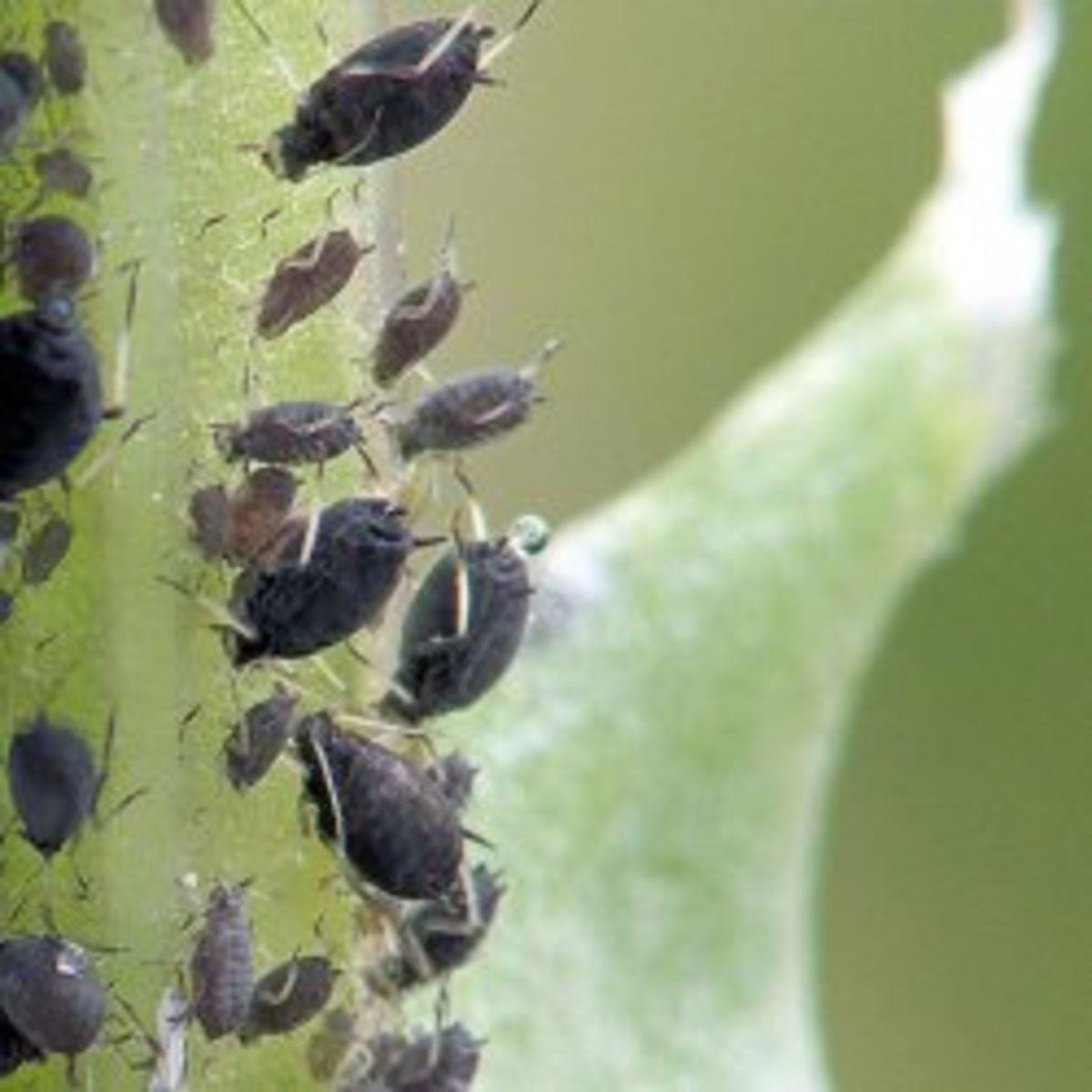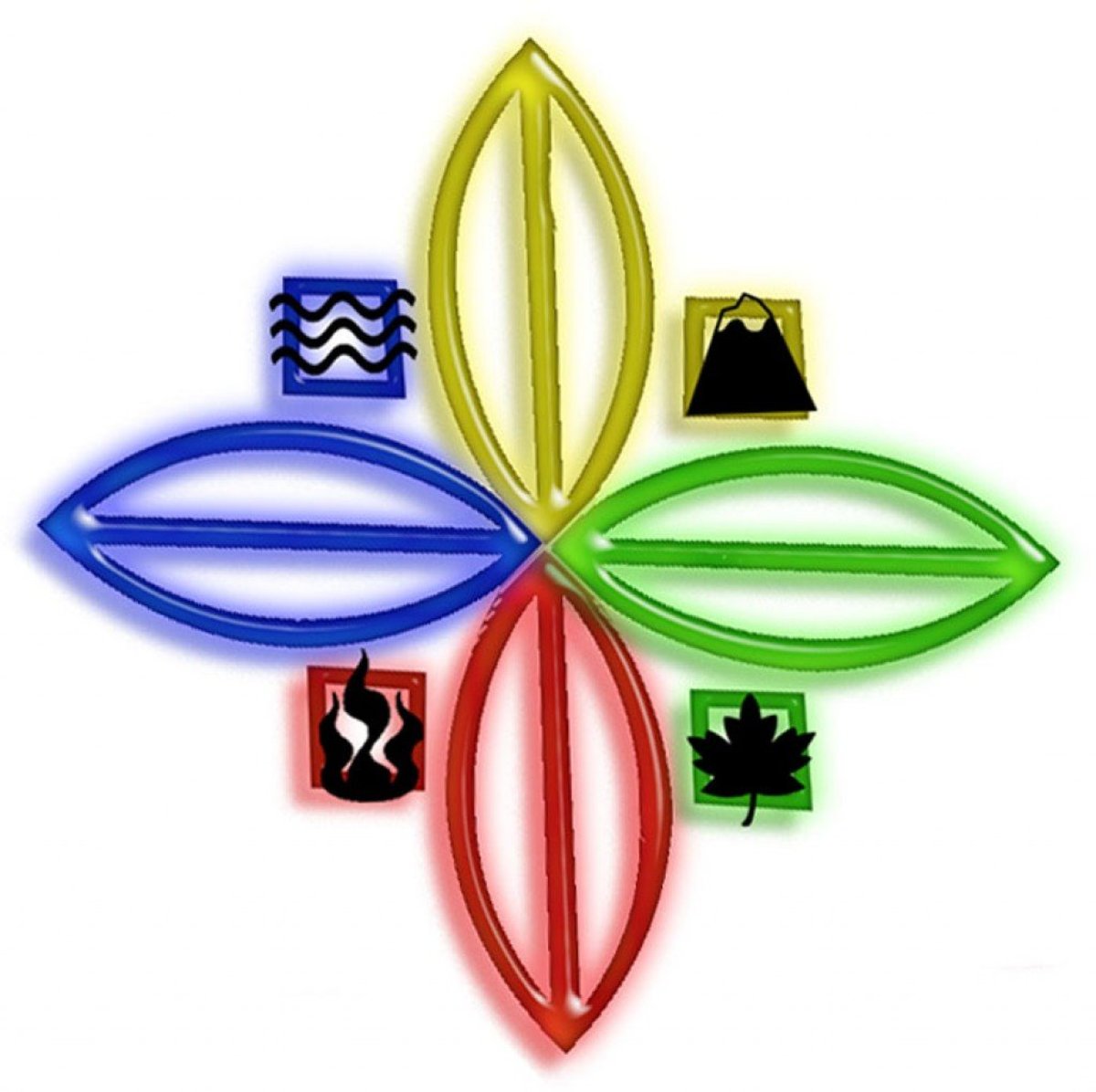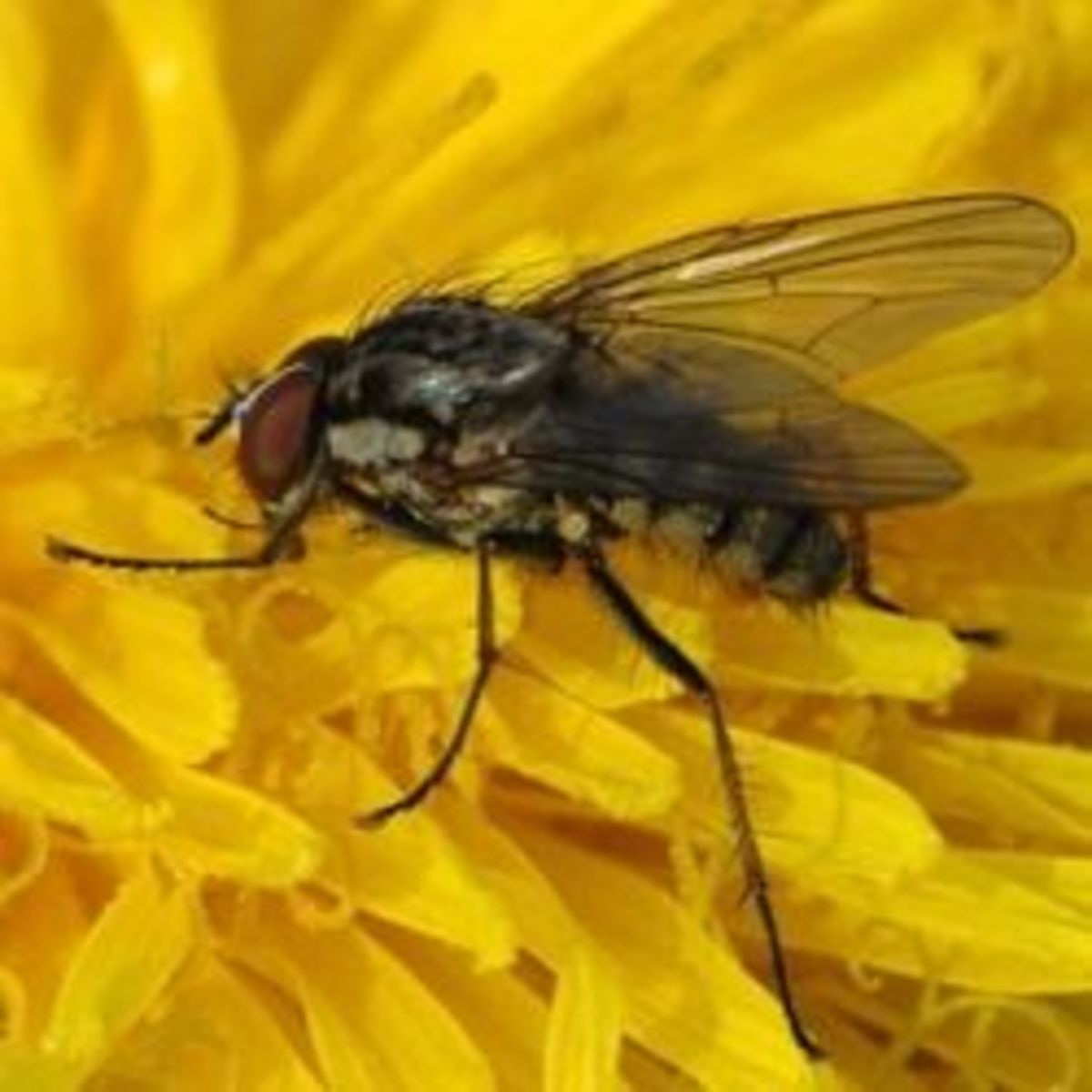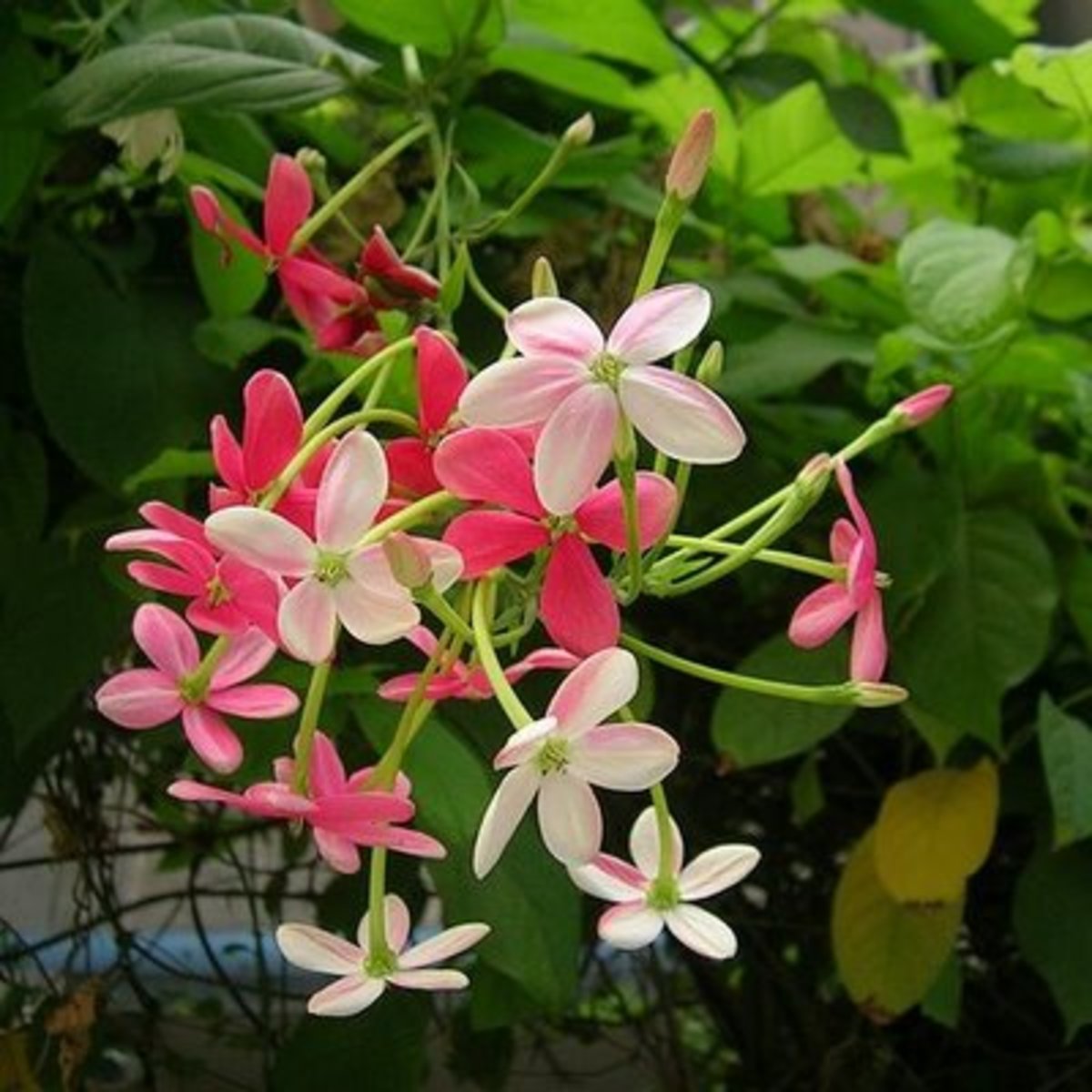Biological Control of the Pea and Bean Weevil
Sitona lineatus
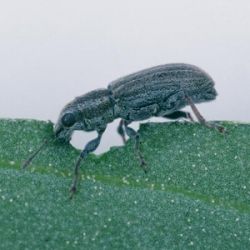
Controlling the pea and bean weevil in an environmentally friendly way
The pea and bean weevil, or pea leaf weevil, is sometimes called the 'broad bean nibbler', because of its habit to nibble at the edges of leaves of peas and beans.
It is up to 5 mm long, short snouted and grey with darker, longitudinal stripes. The legs and antennae are yellow to reddish brown.
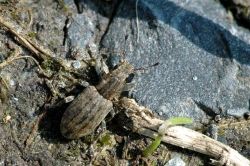
Biology of the pea and bean weevil
Sitona lineatus (Order: Coleoptera; Family: Curculionidae) occurs in the Palaearctic regions, and was introduced to North America. Adult beetles overwinter in plant debris and coarse vegetation. In early spring they move onto beans and peas and during warm weather they lay eggs in the soil; each female can lay up to 1400 eggs.
The white, legless larvae that hatch after some two to three weeks, feed on the nitrogen-fixing root nodules for about four weeks. The mature larvae pupate in the soil and adults emerge in June - July. Until autumn they feed from the leaves, then they leave the plant to seek for suitable hibernation sites. There is usually one generation per year, seldom two.
Damage by the pea and bean weevil
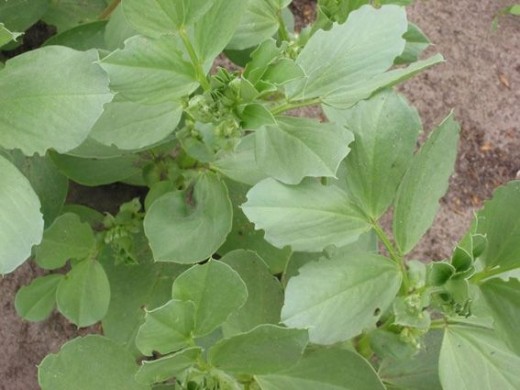
Photographer Rasbak
Although adults eat from the leaves, this does not cause any serious damage. However, the beetles can transmit the broad bean stain virus and the broad bean true mosaic virus, both of which infect broad bean. Symptoms of both viruses are the same: the leaves show first a green mosaic or become yellowish with isolated dark green patches. Eventually the leaves are puckered and the seeds discolored or stained. In dry years, when nitrogen uptake from the soil is reduced, larvae of S. lineatus can cause serious damage by their feeding on the nitrogen-fixing root nodules.
Sitona in Canada
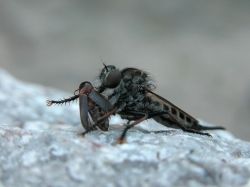
Natural enemies of the pea and bean weevil
Various braconid wasps (Order: Hymenoptera; Family: Braconidae) parasitize the adult weevils, e.g. Pygostolus falcatus and Microtonus aethiops.
In addition, many will be eaten by birds and spiders and probably also by robber flies (Order: Diptera; Family: Asilidae) and predacious bugs (Order: Hemiptera), such as damsel bugs (Family; Nabliidae) and assassin bugs (Family: Reduviidae). The ground-dwelling larvae are preyed upon by centipedes and other ground-dwelling predators, such as ground beetles and mice.
A robber fly and its prey
Treatment
- Remove and destroy fallen leaves and other debris during winter, to kill hibernating weevils.
- Alternatively, keep the ground around affected peas or beans clear during late summer and autumn, and offer the weevils ready-made hibernation sites, made of corrugated cardboard, placed closely around the stems of the plants.
- In winter, remove these artificial hibernation sites and destroy them, together with the overwintering weevils that are inside.
Further reading
- Broad bean true mosaic comovirus (BBTMV)
Broad bean true mosaic comovirus (BBTMV) is characterised by a very narrow host range in the Fabaceae. - Broad bean stain comovirus (BBSV)
Broad bean stain comovirus (BBSV) is one of a number of viruses which are seedborne in a range of temperate pulses and has been found in Africa, Asia, Europe and the Middle East. - Sitona lineatus
Sitona lineatus (Linnaeus,1758) A very common and often abundant species throughout England and Wales including Anglesey and Man but curiously there are no records from the Isle of Wight on the NBN (July 2009). - Identification of potential natural enemies of the pea leaf weevil, Sitona lineatus L. in western Ca
Sitona lineatus L., the pea leaf weevil, is an invasive pest of Pisum sativum L. (field pea) that has recently become established in Alberta, Canada.
Other pea and bean pests
Biological control of the pollen beetle
The pollen beetle, Meligethes aeneus (Order: Coleoptera; Family: Nitidulidae) is also called blossom beetle and is a serious pest on oil seed rape. These bla...
Biological control of the black bean aphid, Aphis fabae
The black bean aphid, Aphis fabae (Order: Hemiptera; Family: Aphididae), also called blackfly, bean aphid or beet leaf aphid, is a damaging aphid that lives ...

